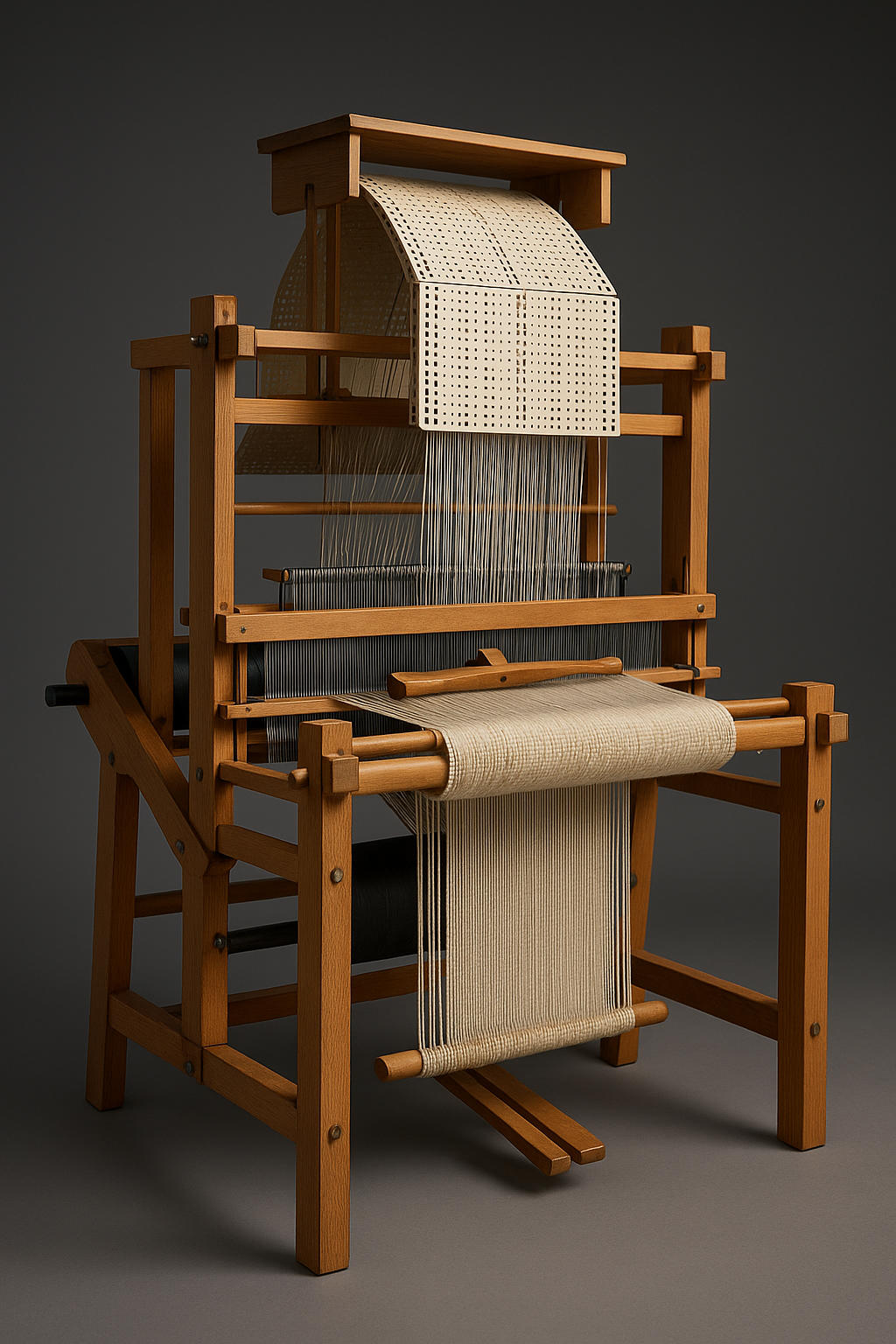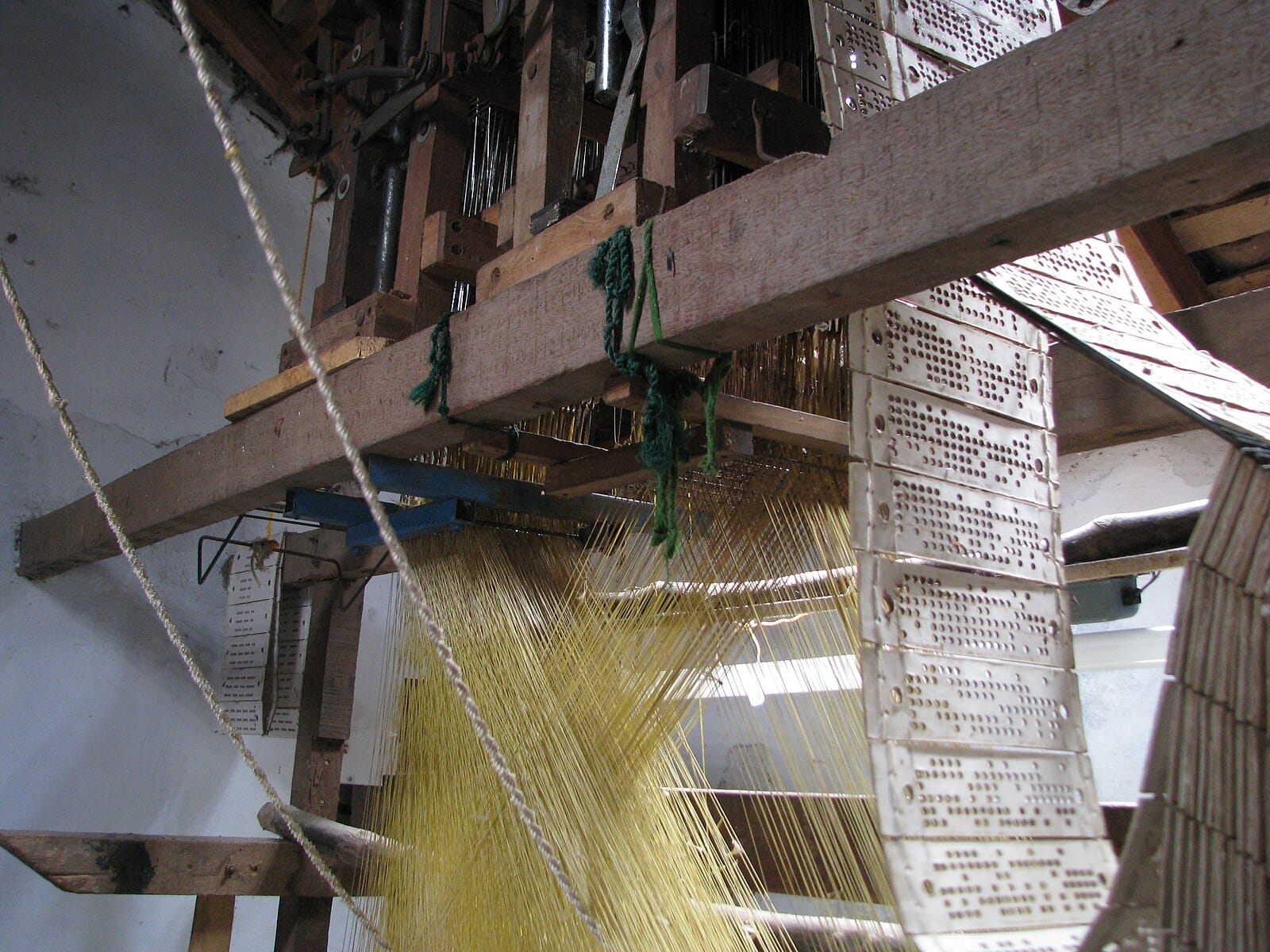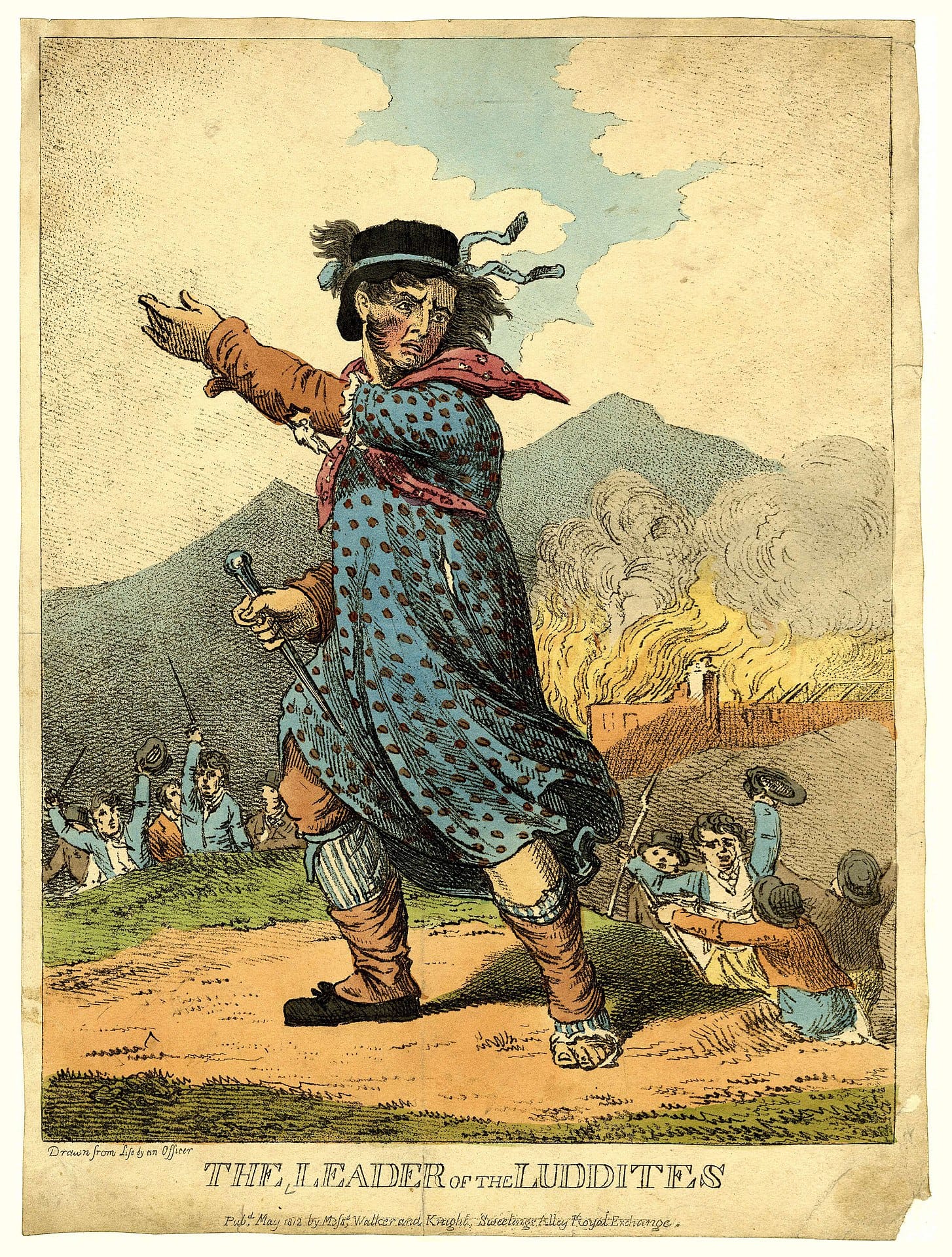
In 1804, a quiet revolution began in Lyon, France. A man named Joseph-Marie Jacquard introduced a loom that could weave intricate patterns into silk — not by the hands of skilled artisans, but through punch cards that controlled threads with mechanical precision. The Jacquard loom became one of the earliest examples of programmable machinery. It was the beginning of automation in creative labor.

The punch cards were physical templates — long rectangular sheets with holes punched in precise positions. Each row of holes represented one line of weaving instructions. These cards determined which threads lifted and which stayed, encoding the entire pattern mechanically. This concept would later inspire Charles Babbage in his Analytical Engine and influence early IBM tabulating machines — making Jacquard’s loom a direct ancestor of modern computing.
The loom didn’t just launch industrialization.
It planted the seeds of computation.
And now, once again, the loom returns — only this time, it doesn’t weave silk.
It weaves everything.
Who Were the Luddites?
Between 1811 and 1816, thousands of English textile workers — particularly handloom weavers — began destroying the machinery they believed was taking their jobs. Named after the mythical figure Ned Ludd, the Luddites weren’t opposed to technology itself, but to the way it was being used to devalue their labor, lower wages, and concentrate profit.
They demanded fair pay, job protections, and dignity. When none came, they rebelled.

The British government responded not with reform, but repression. Troops were deployed. Dozens of Luddites were executed or transported to penal colonies. Breaking a machine became a capital crime. By 1816, the movement had been crushed.
The Aftermath: What Really Happened?
The end of the Luddite riots did not end the suffering. In fact, it marked the beginning of one of the longest periods of working-class decline in British history.
- Handloom weaving collapsed: Between 1820 and 1845, the number of handloom weavers dropped from 240,000 to 60,000.
- Wages plummeted: Weavers’ pay fell by up to 80% in a single generation.
- Urban poverty exploded: Displaced workers crowded into growing industrial cities, often living in slums, working in unsafe factories, or begging for state relief.
- Social protections lagged: Labor laws, unions, and education reforms took decades to emerge — often through blood, protest, and organizing.
For many, the promises of industry arrived only after a generation or more of pain.
The Migration Effect?
As economic prospects dwindled, many workers and artisans began to leave England. Throughout the 1800s, millions emigrated to the United States, Canada, and Australia. While not directly labeled "Luddites," they were often from the same communities and trades affected by industrial displacement.
They brought with them stories of machines that took livelihoods, governments that offered no protection, and a desire to build freer, fairer lives abroad.
Today happens to be July 5th, the day after America's celebration of independence, for me it’s worth reflecting:
What if this is our second chance?
What if AI is the next loom?
And what if we choose a different path this time — one that includes everyone in the pattern?
The Loom Returns — This Time, It Weaves a Deeper Web
Today, a different kind of loom is changing the world. It doesn’t weave silk. It weaves text, images, voice, music, and motion. We call it generative AI.
Much like the Jacquard loom, today’s AI systems can replicate — and even exceed — the creative work of trained professionals. Writers, illustrators, musicians, actors, and designers are watching their industries shift beneath their feet. Many feel as the Luddites once did: displaced, unacknowledged, and unsure if they have a future in the world their talents helped shape.
But there’s a crucial difference this time.
In the 1800s, only the mill owners had access to the loom. Today, AI tools are open-source, decentralized, and global. Millions of people can build with them. We all hold the loom now — and the question is how we’ll use it.
What Can We Learn — and Do Differently?
We don’t need to smash the machines.
But we must change how we build and use them.
Five key lessons:
- Consent must be foundational.
Creative work used to train AI must be opt-in, not scraped without permission. - Attribution should be standard.
If a model is influenced by your work, it should say so — clearly. - Ownership must be respected.
When AI is trained on your voice, writing, or style, you should share in the benefit. - Transparency builds trust.
AI systems must clearly disclose how they were trained and on what data. - Human art and work is sacred.
In a flood of infinite, effortless content, we must champion what is made with intention, care, and soul.
🧶 We Are the Weavers Now
The Luddites were not irrational.
They were early witnesses to a transformation the world wasn’t ready for.
We failed them then — but we don’t have to fail now.
This time, we can design technology that respects the people who built the culture it learns from.
We can choose to include — not erase.
Because today, we are not just the threads.
We are the weavers.
And this is our moment to shape what the loom creates next.